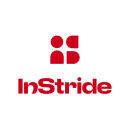From gold stars in kindergarten to career promotions, we all know the empowering value of recognition. Perhaps even more powerful than company perks, gratitude from coworkers and supervisors goes a long way in boosting employee morale. This translates into positive impact for the entire team; engaged employees and teams that have a clear path to achievement, as well as recognition for their hard work, are more likely to perform their best.
At Dray Alliance, VP of Engineering John Heroy has found that defining goals against larger company objectives helps drive mutual appreciation across multiple teams.
“This orientation toward data-driven results has encouraged a culture of recognition that lets anyone, regardless of team or role, understand the impact of another individual or team,” he said.
For HR leaders, building the program is just the beginning. In Kevin Frank’s experience as Chief HR Officer at Golden Hippo, it starts with setting an example.
“As the head of HR, I believe it’s my responsibility to model and exemplify the behaviors and values we expect of all our employees,” he said.
One of those values is ensuring each person feels heard, and providing a safe space for feedback. Improving morale isn’t just about bestowing compliments — a 2019 Forbes study found that employees who believed their feedback was valued felt 4.6 times more likely to perform their best work.
There are many ways to build a culture of recognition, and while one size doesn’t fit all, the sentiment remains the same — spark employee happiness however possible.
With a mission of providing career-boosting education to corporate employees, InStride is inherently focused on bolstering human resources. It makes sense, then, that the InStriders designing and delivering these programs benefit from a culture of encouragement and recognition.
What are a few ways you or the other leaders on your team recognize employees for their hard work?
Three initiatives are particularly meaningful. First, our weekly all-hands meetings (called InStride Connect) are a great way to get a sense of what’s going on around the company and milestones we’ve achieved, as well as shout-outs to team members for the progress they’ve made. Second, once a month we invite an InStrider to share what brought them to InStride and what fills their life outside of work. This has been critical in the last year, since we cannot gather in the kitchen to chat about our career journeys or lives outside of work. Third, each quarter we announce a new “Star of InStride” who sets a shining example of InStride’s values, as well as a “Brand Ambassador” who regularly shares the InStride story on their personal social channels. The selected InStriders don’t know ahead of time, and seeing their reactions during the announcement is one of my favorite things about working here.
As a leader, what have you done to encourage a culture of recognition throughout the entire company and your team?
We started a holiday tradition of sharing gratitude by writing handwritten notes to celebrate and thank another InStrider for their work, or to remind them how awesome they are. With the shift to remote work we had to alter this a bit, so we sent electronic notes instead of paper, but we’ve kept the tradition alive. Small gestures like this go a long way in building positive company culture. The amount of excitement and engagement that comes when we launch the program each November is staggering.
When it comes to giving meaningful employee recognition, what is the most important best practice you follow?
InStride is a mission-driven organization. We want to bring education to people who may not have access to it. When it comes to recognizing our InStriders, tying their successes to our greater mission is essential. Knowing that every improvement, no matter how small, adds to our ability to bring life-changing education opportunities to others is incredibly motivating.
Our InStride leaders do a great job of reflecting on what got us to this point, and ensuring the team sees their impact as we move forward. We also recognize our own employee-learners through our education program, Step Forward. InStride pays 100% of the tuition costs, so no one has to take on debt in order to pursue higher education. This year, our first InStrider graduated from a master’s degree program. It was really special to count one of our own among this year’s graduates, and we had a virtual graduation celebration to commemorate the milestone. Giving our own employees the same education opportunities as our clients is how we live our values, and it really helps tie us to the mission.
One of Dray Alliance’s key product features is real-time GPS tracking for en-route freight. Understanding the value of timeliness, Dray Alliance has also built immediacy into their internal culture of recognition, offering real-time feedback and celebrating wins as they are achieved.
What are a few ways you or the other leaders on your team recognize employees for their hard work?
My team gets together every Friday morning, far away from the stress of Monday planning and context-loading, to share shoutouts with each other. Anyone can give a shoutout to anyone else. Maybe it was someone effectively resolving ambiguity with a new feature’s design, or lending domain knowledge to another engineer debugging a hard-to-reproduce production issue. Celebrating the positive impact of the team’s hard work has helped us maintain cohesion while operating remotely.
As a leader, what have you done to encourage a culture of recognition throughout the entire company or your team?
In order to encourage and guide team members toward positive impact, we try to define what we are trying to do as a business. The next step is giving employees room to innovate and execute against those goals while understanding the subgoals or components for which they are accountable.
This spring, we organized our teams around quantifiable metrics that ladder to the company’s overall and long term goals, and gave leaders and employees the freedom to organize their work against those goals. This orientation toward data-driven results has encouraged a culture of recognition that lets anyone, regardless of team or role, understand the impact of another individual or team.
When it comes to giving meaningful employee recognition, what is the most important best practice you follow?
Recognition should be timely so folks feel validated in real-time. The hustle and hard work that leads to an increase in scope or promotion happens over a longer period of time, so it’s important to provide positive feedback that someone is on track to reach or exceed their goals. We try to proactively recognize good work and offer frequent positive and constructive feedback.
Golden Hippo is an employee-owned, vertically-integrated, highly profitable direct-to-consumer marketer of health, beauty, and pet care brands. As leaders in the holistic wellness space, one of their key company values is creating space for each employee’s unique contribution and voice. Respect and gratitude doesn’t just come from bestowing compliments; understanding how individuals best respond to recognition is key to effective delivery.
What are a few ways you or the other leaders on your team recognize employees for their hard work?
I see recognition as both a way to appreciate work done and the steps taken along the way, as well as an opportunity for employees to be respected and heard. Each team member has a unique value to offer the company and we need to make sure we create space for it.
While we offer a variety of ways to recognize one another, I find the simple Slacks, or quick but sincere shout-outs and gratitude at the end of a meeting go very far. It’s not hard to do, but in today’s fast-paced, meeting-heavy environment, it is important to make time for it.
Creating the space for others to be heard is also very important. People want to know that they are contributing and making a difference, so we offer dedicated time for discussion in meetings and larger-scale initiatives to ensure all voices are heard.
As a leader, what have you done to encourage a culture of recognition throughout the entire company or your team?
As leaders, we need to recognize that we play a critical role in identifying the expectations for others. I think it starts with setting an example: as the head of HR, I believe it’s my responsibility to model and exemplify the behaviors and values we expect of all our employees. As humans, we all deserve respect, appreciation and recognition. I strive to offer this in proactive outreach, and in making myself accessible and available to all.
It’s important that recognition is genuine and appropriate for it to hold value. If I can impact one person almost every day, I hope to set them on a course to share such consideration and appreciation to others. Step by step, day by day, little nudges (and sometimes big ones) help to shape a culture where we can all celebrate and be celebrated.
When it comes to giving meaningful employee recognition, what is the most important best practice you follow?
Keep it simple, be timely, be sincere and make it meaningful to the recipient. This means getting to know what matters most to the individual. Not all people want to be called out in a group setting, while others bask in the limelight. It is important to get to know the person behind the title. Learning what is meaningful to your employees helps you determine what form or type of recognition and appreciation moves them and what does not.
This means building an authentic relationship with those around you, and establishing trust and psychological safety. It means having compassion and interest for those around you. All relationships, at work or outside of work, require constant attention and effort.













